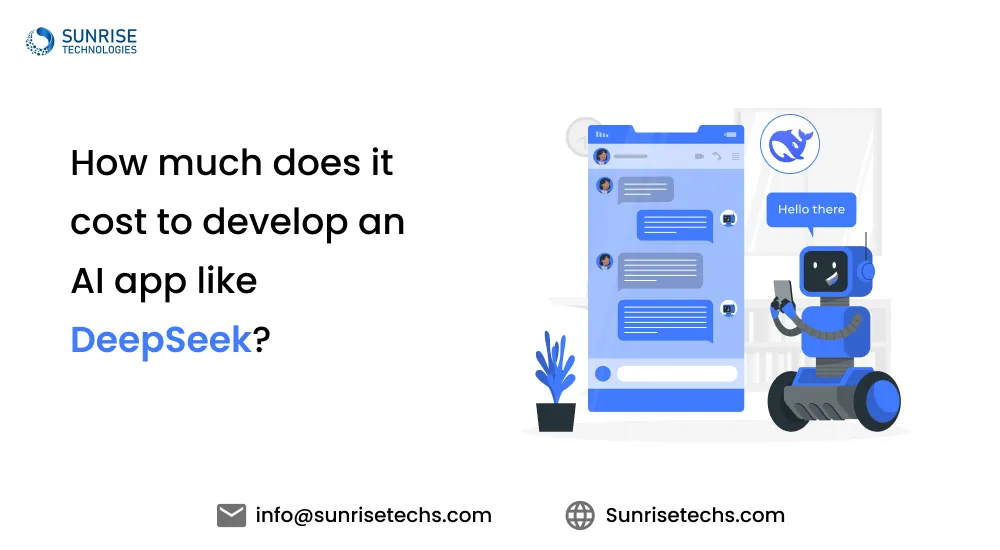
How much does it cost to develop an AI app like DeepSeek?
May 21, 2025
These days, curiosity is at an all-time high. People are like, ‘Hey Google, how can I build an AI chatbot like DeepSeek? And we all know, ChatGPT once dominated the AI landscape with its versatile conversational abilities and widespread adoption. However, the emergence of DeepSeek has introduced a formidable contender, capturing global attention with its specialized focus on technical reasoning and computational tasks.
Notably, DeepSeek’s R1 model achieved a 90% accuracy rate in mathematical problem-solving, surpassing ChatGPT-4o’s 83%, and demonstrated a 97% success rate in logic puzzles, highlighting its proficiency in STEM-related applications Cointelegraph
DeepSeek’s architecture further distinguishes it from ChatGPT. The DeepSeek-Coder-V2 model boasts 236 billion parameters and utilizes a Mixture-of-Experts (MoE) framework, activating only 21 billion parameters per inference.
Explore this blog to uncover how DeepSeek reshapes the AI development landscape, and a full breakdown of what it takes to develop a DeepSeek-like app, including cost factors, development process, and integration strategies.
How DeepSeek Stands Apart from ChatGPT
DeepSeek is a sophisticated AI-powered conversational platform developed by a Chinese company designed to handle complex interactions, answer queries, and assist with tasks like data analysis, coding, and problem-solving. Unlike generic chatbots, it emphasizes domain-specific expertise, high accuracy, and ethical safeguards.
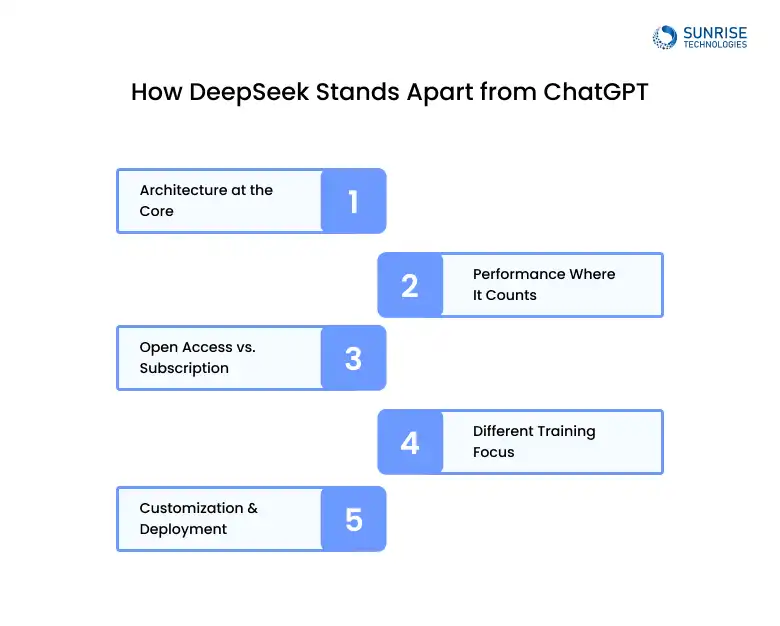
DeepSeek uses what’s called a Mixture-of-Experts (MoE) architecture. That means, instead of using all 236 billion parameters every time, it activates only the parts it needs (around 21 billion), making it highly efficient for specific tasks like coding or math. ChatGPT, meanwhile, sticks to a dense transformer-based model, which uses all parameters across the board, great for general understanding but heavier on compute.
If you’re looking for technical accuracy, especially in STEM or logic-heavy applications, DeepSeek has the edge. On the flip side, ChatGPT wins on versatility, especially when you need smooth conversations, storytelling, or creative content generation.
One of DeepSeek’s biggest draws? It’s completely open-source and free to use. Developers, startups, and researchers can dive in without worrying about license fees. ChatGPT offers a solid free tier, but for GPT-4 and advanced tools, you’ll need to upgrade to a paid plan.
DeepSeek is trained with a laser focus on technical content, think coding repositories, math challenges, and scientific data. ChatGPT, on the other hand, has been fed a wide range of general content, making it better suited for everything from casual conversations to business writing.
Here’s a big one for dev teams DeepSeek is deployable on your own infrastructure, which means more control over data and how the model behaves. ChatGPT is cloud-based, which is super convenient, but it does mean you’re relying on OpenAI’s infrastructure.
| Aspect | DeepSeek | ChatGPT |
|---|---|---|
| Model Type | Open-source LLM | Proprietary LLM |
| Architecture | Mixture-of-Experts (MoE) | Transformer-based |
| Performance | Excels in technical tasks | Versatile, user-friendly |
| Accessibility | Free and open-source | Free tier with limitations |
| Purpose | Industry-specific tasks (e.g., drug discovery, fraud detection) | General-purpose conversational AI |
| Customization | Fine-tuned for niche workflows | Limited API-based tweaks |
| Latency | Optimized for real-time processing | Higher latency in complex tasks |
| Cost | Higher initial investment | Lower cost for generic use |
Technical Components of a AI App Like DeepSeek
Developing an AI application similar to DeepSeek involves several critical technical components:
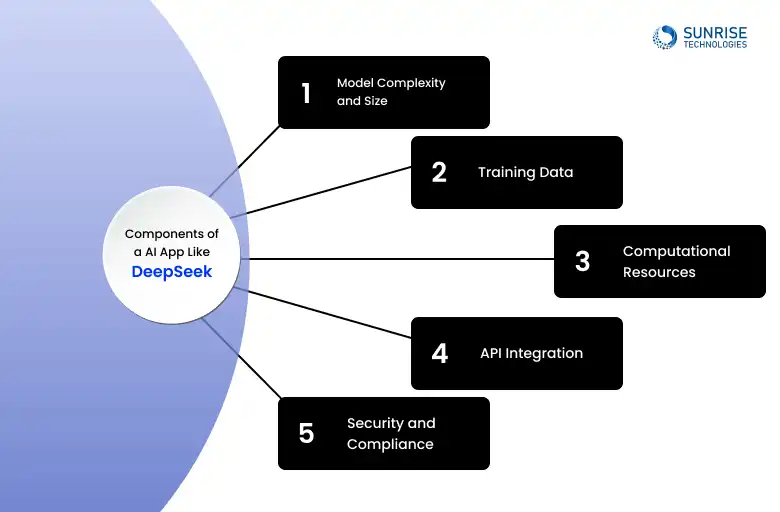
DeepSeek’s models, such as DeepSeek-Coder-V2, feature 236 billion parameters and a 128,000-token context window, supporting 338 programming languages.
- Machine learning algorithms
- Natural language processing
- Computer vision
- Predictive analytics
- Deep learning and neural networks
DeepSeek’s models, such as DeepSeek-Coder-V2, feature 236 billion parameters and a 128,000-token context window, supporting 338 programming languages.
A vast and diverse dataset is essential for training the model to handle complex tasks effectively.
High-performance GPUs and TPUs are required for training and inference, necessitating significant investment in hardware or cloud services.
Developing robust APIs ensures seamless interaction between the AI model and end-user applications.
Implementing stringent security measures and ensuring compliance with data protection regulations are paramount.
Essential Features to Build a app Like DeepSeek, AI ChatGPT
If you’re looking to build an AI app that can keep up with, or even outshine DeepSeek, you’ll need to pack it with some serious features under the hood. Let’s walk through the must-haves, explained in a way that’s easy to digest but rich in technical power.
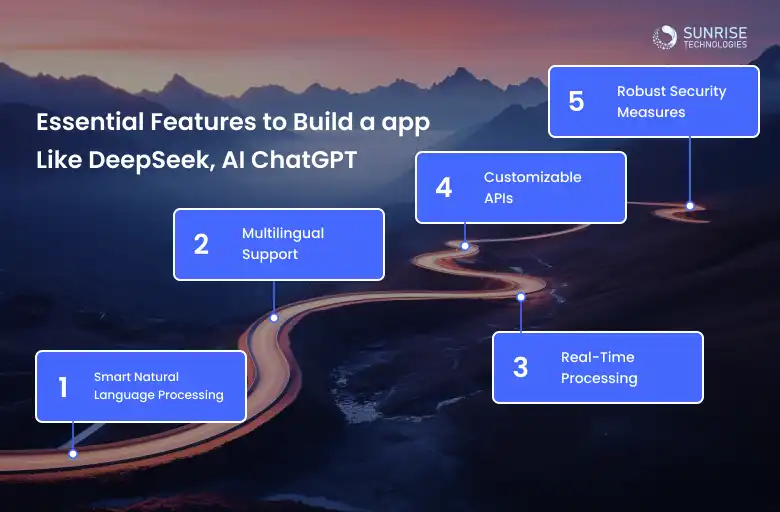
At its core, your app needs to actually understand what people are saying, not just throw back fancy responses. This is where advanced NLP comes in.
- Models that can summarize a report, answer questions, or generate clean code.
- Tools like BERT, RoBERTa, or a fine-tuned LLaMA model do a great job at reading between the lines and delivering spot-on answers.
Want to level up? Try RAG (Retrieval-Augmented Generation), it helps your model pull in relevant info before crafting a response. Super handy for accuracy.
If you’re thinking global, multilingual support is a no-brainer. DeepSeek nailed it with its bilingual (Chinese-English) strength, and your app should do the same (or better).
This means using shared token vocabularies and language-agnostic embeddings so your model doesn’t treat each language like a separate universe. The goal? Seamless switching between languages without losing context or tone.
Nobody likes waiting, especially when chatting with AI. Your app needs to be snappy, even if it’s crunching through billions of parameters.
- Use a Mixture-of-Experts (MoE) model like DeepSeek does. Instead of firing up all parameters for every question, it just uses the ones it needs. Less compute, faster answers.
- Pair that with performance boosters like ONNX Runtime, Triton Inference Server, or GPU acceleration to keep things flying.
Let’s face it, if developers can’t plug into your app easily, you’ll lose half your user base. So, make sure your AI comes with clean, customizable APIs.
- Whether it’s for code completion, smart replies, or personalized assistants, your endpoints should be flexible.
- Think RESTful or GraphQL APIs, maybe even real-time webhooks and a fine-tuning option for that extra customization.
If your app is dealing with user data (which it probably is), security isn’t optional, it’s critical.
- You’ll need end-to-end encryption, access controls, and smart practices like data anonymization to stay safe.
- If you're targeting industries like finance or healthcare, compliance with GDPR, HIPAA, or SOC 2 is a must.
Bottom line? Building an app like DeepSeek AI ChatGBT is totally doable, but only if you’ve got these features working together like a well-oiled machine. It’s not just about being intelligent, it’s about being secure, fast, flexible, and developer-friendly.
On average, developing an AI-powered app like DeepSeek can cost anywhere from $50,000 to $300,000, depending on the scope, tech stack, and complexity of features. If you’re scaling it up for AI enterprise-level deployment or fine-tuning large model from scratch, it might even stretch beyond that.
How Much Does It Actually Cost to Build a AI App Like DeepSeek in USA?
Let’s talk numbers, because we all want to know what’s actually at stake when planning an AI DeepSeek development.
On average, developing an AI-powered app like DeepSeek can cost anywhere from $10,000 to $50,000, depending on the scope, tech stack, and complexity of features. If you’re scaling it up for AI enterprise-level deployment or fine-tuning large models from scratch, it might even stretch beyond that.
| Category | Estimated Cost (USD) | Details |
|---|---|---|
| 1. AI Model Development | $5,000 – $50,000 | Cost includes data collection, model selection, training, and fine-tuning using machine learning algorithms. |
| 2. App Development (Frontend/Backend) | $5,000 – $25,000 | Developing the user interface (UI) and backend to support AI functionalities. This includes mobile/web development. |
| 3. Data Collection & Annotation | $15,000 - $25,000 | Gathering and annotating the required datasets for training AI models. |
| 4. Cloud Infrastructure (Hosting/Compute) | $3000 -$8,000 per year | Utilizing cloud services (AWS, Google Cloud, or Azure) for running AI models, storing data, and scaling the app. |
| 5. AI Integration & API Development | $15,000 - $30,000 | Integrating AI models into the application and developing APIs for interaction between systems. |
| 6. UI/UX Design | $5,000 - $15,000 | Designing a user-friendly interface and ensuring a smooth experience for users. |
| 7. Testing & QA | $8,000 - $15,000 | Ensuring the app is bug-free, stable, and performs well across various platforms. |
| 8. Project Management | $5,000 - $10,000 | Managing the project through the development lifecycle, ensuring timelines and budgets are met. |
| 9. Maintenance & Updates (Yearly) | 20% to 25% of the total product cost | Ongoing maintenance, bug fixes, and AI model updates after the app is launched. |
Cost Comparison: Build an AI App Like DeepSeek in Australia
DeepSeek Developement in Australia can cost anywhere from AUD $180,000 to $500,000 depending on the complexity and scope of the project. The minimum cost includes the development of AI models, cloud infrastructure, app development, and integration. Costs for data collection, UI/UX design, and testing are also part of the total expenditure. While more basic applications might fall on the lower end, advanced features and scalability can drive the cost higher.
Real-World Success Stories: How Top Companies Built AI Apps Like DeepSeek
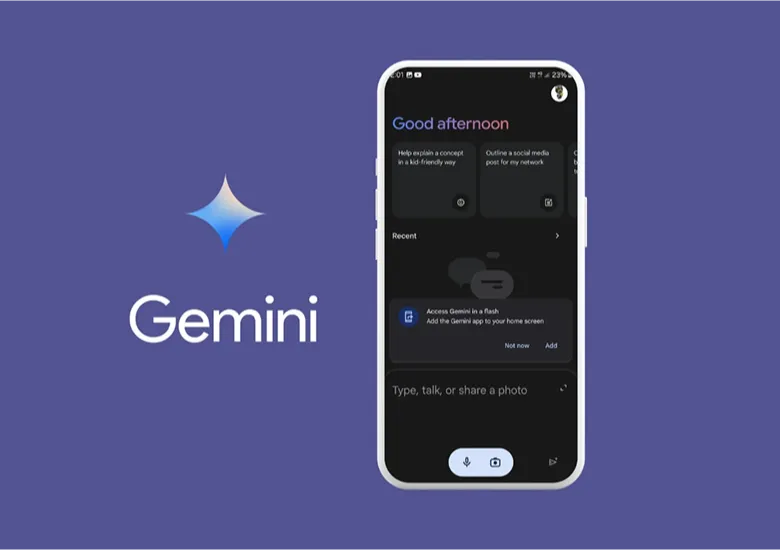
Google DeepMind introduced Gemini as a cutting-edge large language model built to rival GPT-4 with enhanced reasoning, vision, and multimodal capabilities.
- AI Model Focus: General-purpose multimodal reasoning and generation with scalable architecture
- Technologies Used: Pathways architecture, Transformer-based LLMs, Reinforcement Learning, Multimodal training (text, image, code), TPU acceleration.
Gemini powers advanced applications in Android, Google Workspace, and Search, understanding and responding to inputs across text, images, and code. Its Pathways-based model architecture allows for efficient scaling, long context windows, and fine-grained multitask learning. The Gemini 1.5 release supports up to 1 million tokens in context, enabling more accurate and rich user interactions.

OpenAI revolutionized the AI space with ChatGPT, a conversational model based on GPT architecture, designed for reasoning, creativity, and task automation across industries.
- AI Model Focus: Scalable general-purpose language model for text generation, reasoning, coding, and multimodal input.
- Technologies Used: Transformer-based LLMs (GPT-3.5, GPT-4), Reinforcement Learning with Human Feedback (RLHF), Retrieval-Augmented Generation (RAG), multimodal inputs (image, voice, files).
ChatGPT is integrated across consumer apps, enterprise tools, and developer platforms, enabling document analysis, code generation, tutoring, and real-time dialogue. With GPT-4 Turbo, users benefit from extended memory, tool usage (code interpreter, browser), and multimodal capabilities in one seamless assistant. It powers Microsoft Copilot, countless enterprise chatbots, and developer APIs worldwide, making it a cornerstone of the generative AI ecosystem.
Anthropic’s Claude was designed as a next-gen conversational AI, emphasizing safety, transparency, and reduced bias through Constitutional AI.
- AI Model Focus:Ethical, interpretable, and safe conversational agent with reasoning capabilities.
- Technologies Used: Constitutional AI, Transformer models, Reinforcement Learning from AI Feedback (RLAIF), model fine-tuning pipelines.
Claude’s design ensures outputs adhere to pre-defined ethical rules rather than human-rated feedback alone. Used by platforms like Notion and Quora (Poe), Claude supports long-context reasoning, fewer hallucinations, and a more human-like tone. Claude 3’s models now match or exceed GPT-4 on several academic and commercial benchmarks.
Factors That Influence the Cost of an AI App Like DeepSeek
The price tag doesn’t just come from writing code, it’s the sum of many moving parts, each with its own set of requirements.
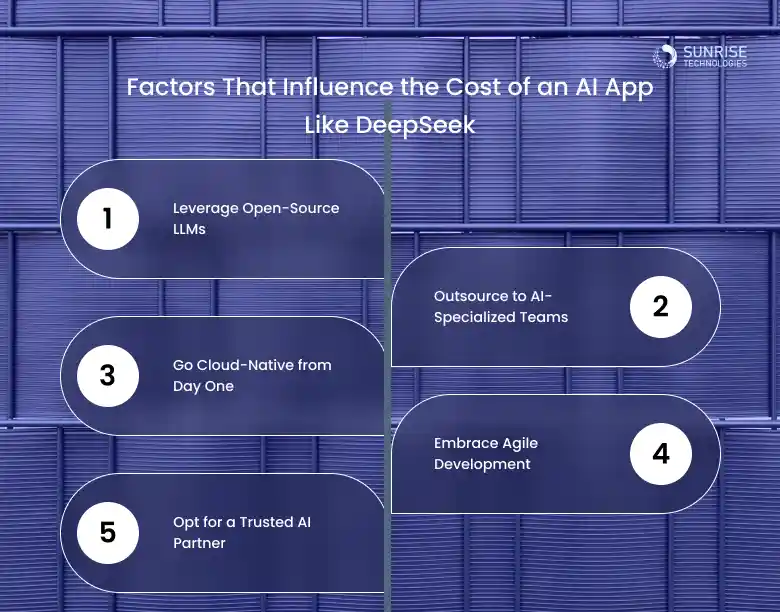
The more specialized and high-performing your model, the higher the investment.DeepSeek’s use of a Mixture-of-Experts (MoE) architecture, which dynamically selects expert subnetworks, provides enhanced reasoning but also adds architectural and training overhead.
AI models are only as good as the data they’re trained on. Whether it’s public code repositories, multilingual corpora, or proprietary datasets, curating, cleaning, and labeling data drives both quality and cost.
Behind every smart AI app is a robust compute backbone. Cloud providers like AWS and Google Cloud offer GPU clusters (A100, H100) with autoscaling, but sustained training and inference loads can significantly impact your budget.
Hiring the right mix of talent is non-negotiable for AI success. From NLP engineers to DevOps to UI developers, skills in tools like PyTorch, Kubernetes, and Hugging Face Transformers are essential (and often pricey).
Data security isn’t a luxury, it’s a legal must. Implementing OAuth 2.0, SOC 2 compliance, and robust audit logs adds cost but protects long-term user trust and legal peace of mind.
Supporting multiple languages? That’s more data, more training, and more localization workflows. You’ll likely need parallel corpora, NMT models, and tokenizers like SentencePiece to ensure fluency across language boundaries.
Making your AI talk to the rest of the digital world requires stable, scalable APIs. Building RESTful or GraphQL endpoints, with authentication, rate-limiting, and analytics hooks, adds backend complexity.
An app used by 10 users isn’t the same as one used by 10,000. Architecting for elastic scaling think Kubernetes with autoscaling, Redis for fast caching, and CDN for content delivery, adds cost, but prepares you for growth.
If users expect split-second replies, you’ll need low-latency models and high-throughput APIs.This may involve quantization, edge AI deployment, or using model distillation to speed up inference while maintaining accuracy.
Strategies to Reduce Development Costs Without Compromising on Quality
Building an AI app for startups and SaaS companies doesn’t have to burn a hole in your budget. With the right strategies, you can save smart while still building something truly powerful.
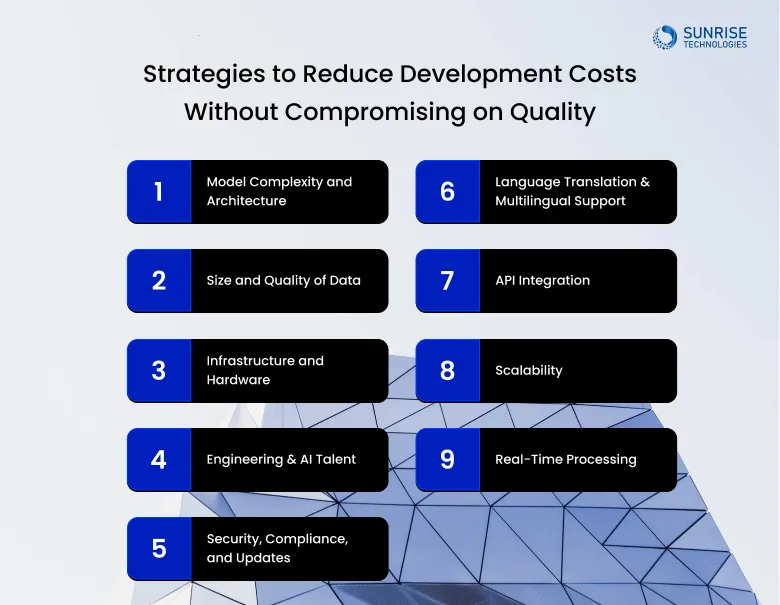
Why reinvent the wheel when there are cutting-edge models already out there? Frameworks like Hugging Face, DeepSeek, and OpenLLM give you robust pre-trained models, significantly reducing time and compute needed for development from scratch.
Sometimes, it’s smarter to hire the experts than build an in-house army. Outsourcing complex tasks like model fine-tuning, data engineering, or even UI/UX to a company specializing in AI app development (like Sunrise Technologies) ensures efficiency, quality, and faster delivery.
Skip the hardware setup, go straight to scalable, on-demand compute. Platforms like AWS SageMaker, Google Vertex AI, or Azure Machine Learning let you run models, manage datasets, and scale apps without upfront infrastructure costs.
Build faster, smarter, and more user-focused. Using agile sprints with regular iterations allows teams to release MVPs quickly, test in real-time, and optimize based on feedback, cutting waste and reducing development cycles.
Partnering with a company that lives and breathes AI makes all the difference. Sunrise Technologies offers end-to-end AI application development from ideation to deployment, helping you cut down on hiring, tools, training, and infrastructure, all while staying ahead with the latest in AI innovation.
Integration Strategies for AI Applications
So, you’ve built (or are building) your AI model, great! But how do you actually plug it into your product and make it work like magic? That’s where smart AI integration comes in. Let’s break down how to do it right:
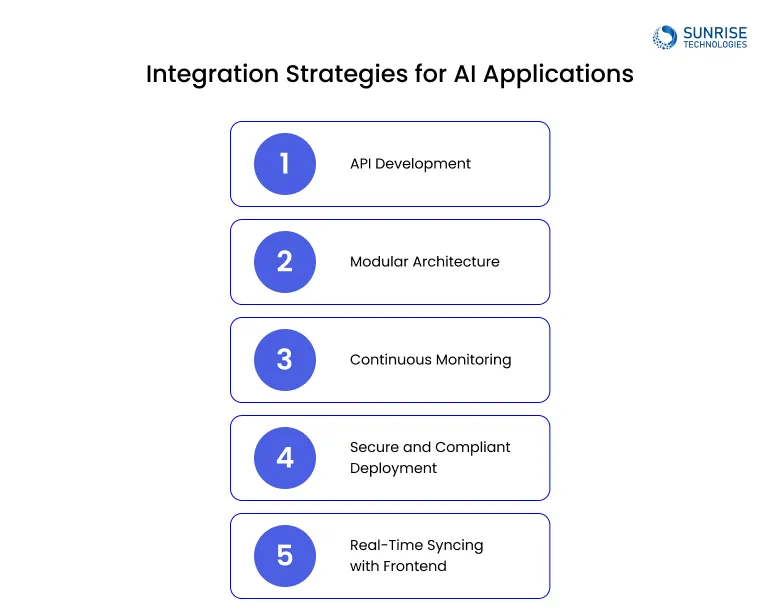
Your AI model is smart, but it needs a way to talk to your app, enter APIs. Develop RESTful or GraphQL APIs that let your front-end or third-party systems securely request and receive predictions, suggestions, or results from your model in real time.
Think of your app like LEGO blocks, each feature should stand on its own. A modular design means your AI component can evolve independently. Need to update just the NLP module? You won’t have to touch your whole codebase.
Once it’s live, the real work begins, keeping your AI sharp and responsive. Set up observability tools like Prometheus, OpenTelemetry, or even custom dashboards to track response time, failure rates, or prediction accuracy. Use this data to fine-tune your model on the fly.
Ensure integration points follow best practices in data encryption (like TLS/SSL), authentication (OAuth 2.0 or JWT), and comply with privacy standards such as GDPR or HIPAA.
Users expect instant replies and zero lag, especially in AI chat apps or assistants. Use event-driven architecture with WebSockets or Kafka to keep your backend AI model and frontend in real-time sync for smooth user experiences.
Step-by-Step Guide: How to build a app like Deepseek
Building an AI application isn’t just about models and math, it’s a journey from idea to innovation. Here’s a step-by-step breakdown of “How to create AI app like Deepseek”:
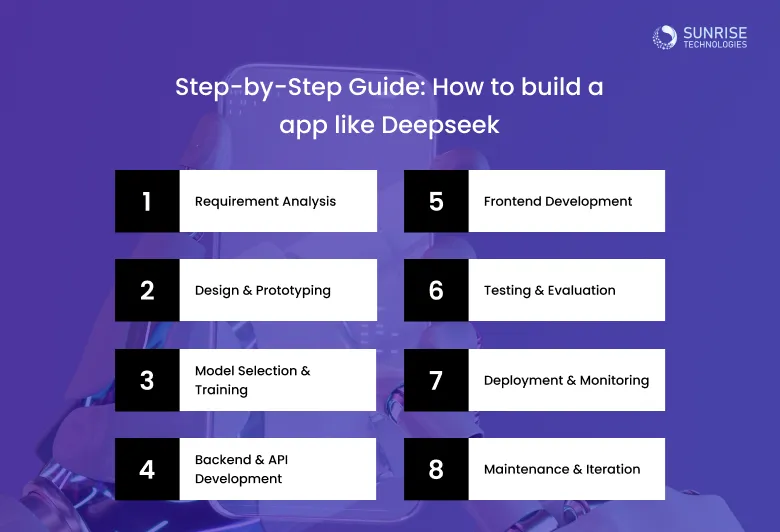
Every great build starts with asking the right questions. At this stage, the team defines what the AI app is supposed to do, whether it’s solving math problems like DeepSeek or offering natural conversations like ChatGPT. This involves market research, competitor analysis, and mapping out user personas.
Before writing any code, let’s get visual. Designers create wireframes and mockups for the app’s user interface (UI) and user experience (UX). For AI apps, this also includes outlining how users will interact with the AI, via chat, voice, or APIs.
Whether you start with a pre-trained model like DeepSeek or train your own from scratch, this step involves selecting the right LLM, feeding it high-quality datasets, and optimizing for your app’s unique tasks (e.g., coding, translation, summarization).
The brain needs a body and a voice. This is where engineers develop the server-side logic and APIs to connect the model with the app interface. RESTful APIs, secure endpoints, and real-time capabilities are all built here.
This is the layer users interact with, and it has to be smooth. Whether it’s a web portal, mobile app, or chatbot interface, frontend devs ensure that input/output with the AI model is seamless, intuitive, and responsive.
Before launch, it’s time to poke holes. Extensive testing is done, unit testing, integration testing, and especially model validation to ensure the AI outputs are accurate, ethical, and safe. A/B testing can also help fine-tune UX and performance.
Time to go live, but stay watchful. The AI app is deployed on cloud platforms like AWS, Azure, or GCP. Continuous monitoring tools are set up to track latency, errors, and user engagement, ensuring your model performs well under real-world conditions.
The AI world changes fast, so should your app. Frequent updates, retraining with new data, and incorporating user feedback help keep the app relevant, efficient, and ahead of the curve.
Why Sunrise Technologies for a DeepSeek-Like AI App Development?
With over 10+ years of experience, 50+ seasoned developers, and 260+ successful projects delivered, Sunrise Technologies has helped global clients turn complex AI ideas into scalable, high-performing apps.
From Mixture-of-Experts (MoE) models like DeepSeek to transformer-based architectures, we specialize in building, fine-tuning, and deploying language models that solve real-world problems—from code generation to multilingual translation.
Whether you’re starting from scratch or scaling an MVP, we handle everything:
- Data collection & annotation
- Model training & optimization
- API development
- UI/UX design
- Secure cloud deployment
- Performance monitoring
We combine agile methodologies with powerful cloud services to cut down on time and cost, without cutting corners. Our clients typically see:
- 30% faster time to market
- 40% better-quality hires (for recruitment AI)
- 25% lower development costs
By now, you’ve probably realized, building an AI app like DeepSeek isn’t just about having a brilliant idea. It’s about planning smart, budgeting right, and choosing the right tech stack (and team). An intelligent application with DeepSeek-like abilities can unlock unprecedented levels of efficiency, automation, and innovation within your specific domain. The key takeaway is to approach this endeavor with meticulous planning, a clear understanding of your specific needs and budget, and a strategic partnership with experienced AI development professionals.
Top AI app development companies, like Sunrise Technologies, bring deep technical expertise and end-to-end support—from model development to cloud deployment, so you can focus on delivering impact, not debugging your backend.
Building an AI app similar to DeepSeek can cost between $60,000 and $150,000, depending on factors like app complexity, data requirements, and integration needs. Biz4Group
Yes, leveraging open-source models like DeepSeek can significantly cut down on development time and expenses. These models provide a solid foundation, allowing developers to customize features without starting from scratch. DEV Community
Essential features include advanced natural language processing (NLP), multilingual support, real-time processing capabilities, customizable APIs, and robust security measures. These components ensure the app can understand and generate human-like text, cater to a global audience, and maintain user data security.
The cost of AI development in Australia can range from AUD 33,000 for basic solutions to AUD 800,000 or more for complex, enterprise-level AI solutions. Prices vary based on project scope, technology used, and the specific AI needs of your business.
Not necessarily. While having a skilled team is beneficial, many aspects of AI app development can be outsourced to specialized firms, which can provide expertise and efficiency, potentially reducing costs and development time.
Sam is a chartered professional engineer with over 15 years of extensive experience in the software technology space. Over the years, Sam has held the position of Chief Technology Consultant for tech companies both in Australia and abroad before establishing his own software consulting firm in Sydney, Australia. In his current role, he manages a large team of developers and engineers across Australia and internationally, dedicated to delivering the best in software technology.


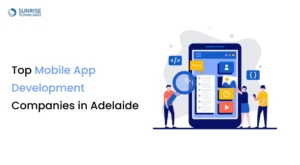
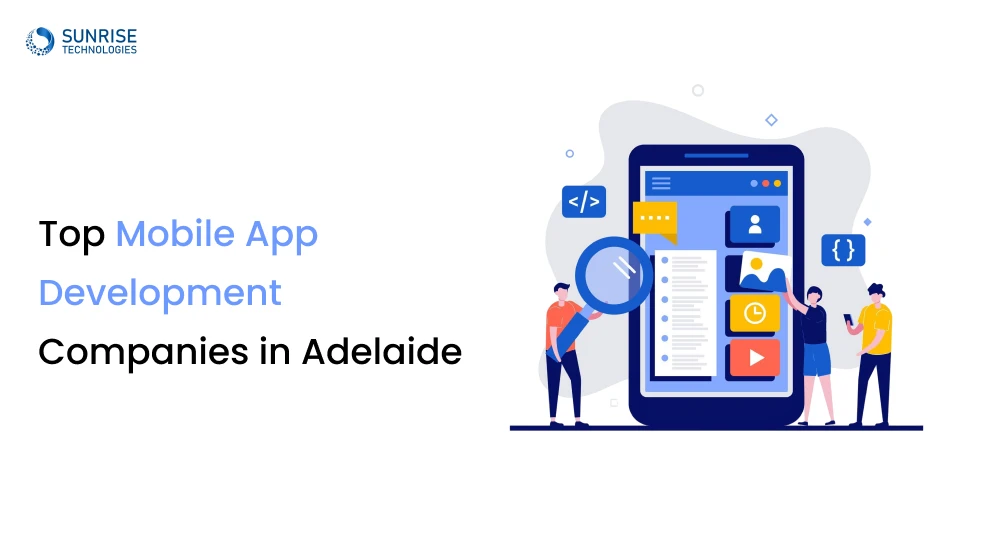
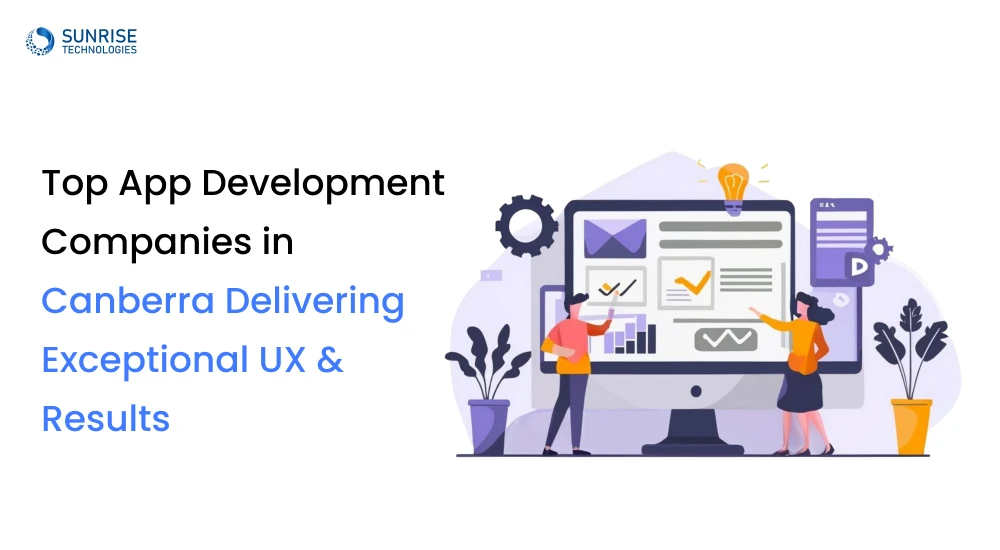
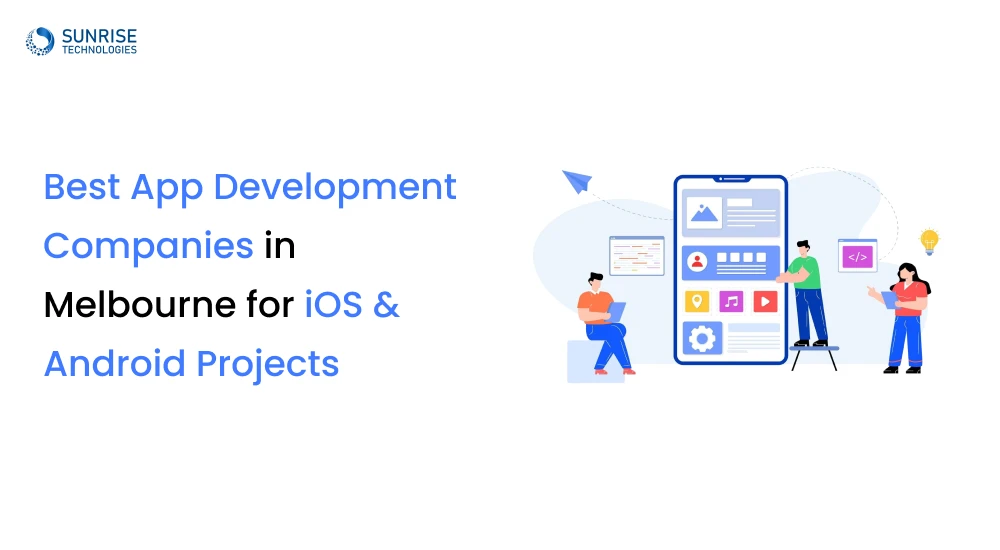
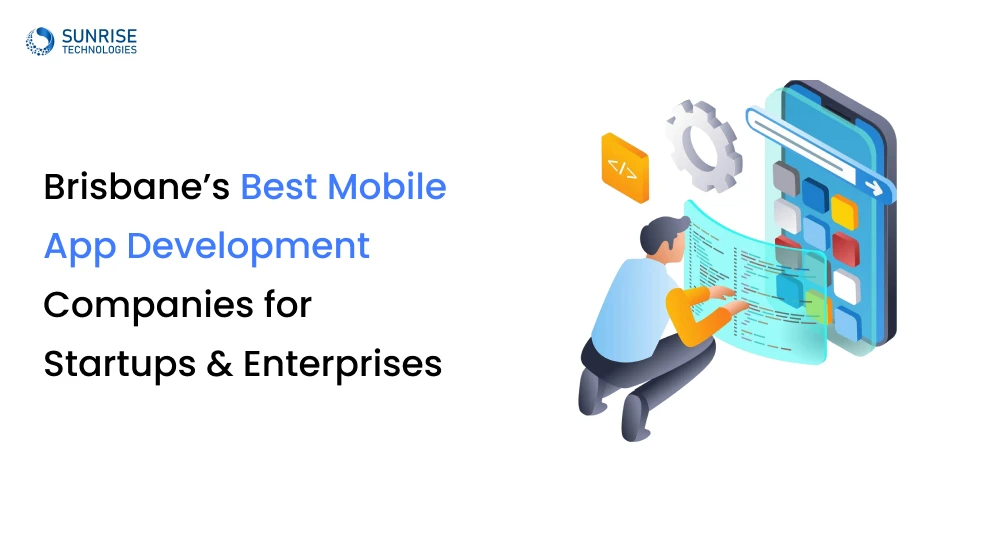
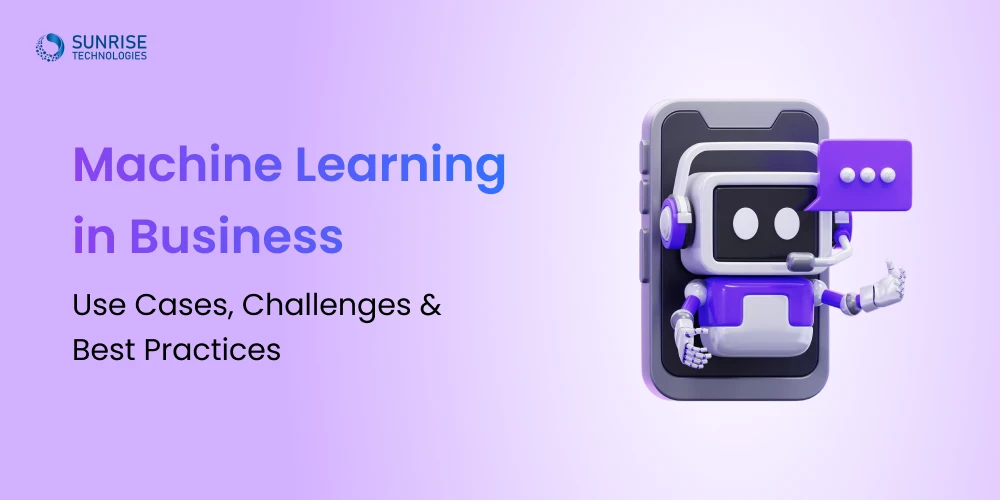

Cloud Based Project Management Platform
Read the challenges we faced and how we helped
View Case Study











